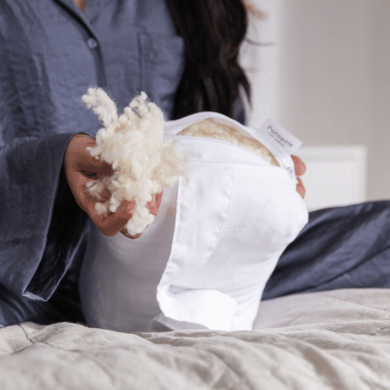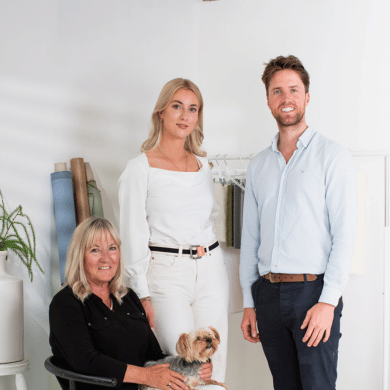
Achieve Restful Nights and Productive Days with the 10-3-2-1-0 Sleep Rule
Ok, so it's not the snappiest of hashtags, but the 10-3-2-1-0 sleep rule might be the combination that unlocks the holy grail for every insomniac, a restful night's sleep. If you struggle with sleeplessness at night this simple sleep hygiene regime might just be your ticket to improved sleep.
If you have been plagued by sleeplessness likelihood is you have exhausted most of the common sleep strategies.
As we all know the quality of our sleep dramatically affects our overall health and daily productivity. Yet many of us struggle to get the required amount of sleep that will keep us healthy and happy.
The 10-3-2-1-0 Sleep Method Explained
The transformative 10-3-2-1-0 formula could be the game-changer you've been hunting for. This uncomplicated routine is ingeniously designed to prime both your body and mind for a night of unbroken, rejuvenating slumber.
Let's break down the numbers and unlock a restful night's sleep for all our Putnam's customers that wrestle with insomnia.
- 10 hours before bed: It's time to bid adieu to caffeine. Those late afternoon coffees might be keeping you awake longer than you'd like. Aim to cut out caffeine-containing foods and drinks at least 10 hours before you hit the hay.
- 3 hours before bed: Put down the fork and the wine glass. Heavy meals or alcohol close to bedtime can mess with your sleep. Try to finish eating and drinking alcohol at least 3 hours before you plan you call it a day.
- 2 hours before bed: It's time to clock out (hopefully) and say goodbye to work. Your brain needs time to switch off from the day's tasks and relax, it's time to decompress. Aim to stop work-related or mentally stimulating activities at least 2 hours before bed.
- 1 hour before bed: Time to power down those screens. The blue light emitted by electronic devices can interfere with your body's natural sleep cycle. Make it your goal to avoid screens, like phones, TVs, and computers, at least 1 hour before bed. Wherever possible make your sleeping area a screen free zone!
The Benefits of the 10-3-2-1-0 Sleep Method
Popularised in recent years by US doctor Jess Andrade, this sleep method is not just about counting down hours.
It's a structured approach aimed at creating the perfect environment for a good night's sleep. By setting boundaries on caffeine, food, work, and screen time, you're allowing your body to wind down naturally.
This routine helps you establish a consistent sleep schedule, reduce the intake of sleep-disrupting substances, and promote relaxation before bed.
We all know the importance of routine, especially if you have babies - routine, routine, routine. So why not treat yourself with the same care and attention you would a baby - you deserve it.
Other Popular Sleep Hacks
There are several sleep hacks that have made the headlines over the past few years that are worth your attention. Remember, everyone's sleep needs are different, so don't be afraid to tweak any method to suit your lifestyle. These hacks can work for those that have problems falling asleep initially or for those that wake up consistently and struggle getting back to sleep.
Progressive Muscle Relaxation Technique
The Progressive Muscle Relaxation Technique (PMR) involves intentionally tensing and then relaxing each muscle group in your body, leading to physical relaxation and promoting sleep.
- Slow Down: Start by inhaling and slowing down your breathing and giving yourself the freedom to relax.
- Tense: Focus on a specific muscle group for about 5 seconds, making sure you can feel the tension without causing pain.
- Relax: Release the tension and keep the muscles relaxed for approximately 10 seconds. Use a relaxation cue, like saying "Relax."
- Pause: After completing the relaxation procedure, remain seated for a few moments to become alert again.
The 4-7-8 Sleep Method
A simple yet powerful breathing technique that can calm the mind and prepare the body for sleep.
- Inhaling for 4 seconds.
- Holding the breath for 7 seconds.
- Exhaling for 8 seconds.
The 4-7-8 process can be perfected over the course of several weeks and benefits noticed within several days. This method can be used to combat everyday stress and anxiety. Often this process is utilised in conjunction with other strategies like yoga and mindfulness.
The Military Sleep Method
The Military Sleep Method, used by soldiers to ensure they get adequate rest even in challenging conditions, this method combines visualization and muscle relaxation to help you fall asleep in 2 minutes. Disciples of the Military Sleep Method estimate a 6 week training period should suffice before you enjoy your very own 'passing out' ceremony.
- Breathe deeply: Start by closing your eyes and taking slow, deep breaths. This helps initiate the relaxation process.
- Relax your face: Begin at your forehead and gradually relax all facial muscles. Slowly work your way down your face from forehead to chin.
- Drop your shoulders and arms: After your face, move to your neck, shoulders, and arms. Let your shoulders sink into the bed and methodically relax each part of your arm, from bicep to fingers.
- Work your way downward: Continue the process down your body, focusing on different areas such as your chest, abdomen, pelvis, and finally each leg. Remember to relax each part of your leg, from thigh to toes.
- Clear your mind: The final step is mental relaxation. Visualize a calming scene or repeat "Don't think" in your mind for 10 seconds. If you get distracted, gently bring your focus back to your visualization or recitation.
The 10-3-2-1-0 Method Your Ticket to Restful Nights and Productive Days
Do you struggle with Insomnia? Sleeplessness or any other sleep disorder? Why not try the 10-3-2-1-0 sleep method? 💤💤https://t.co/qMQpAfZyPp #insomnia #sleep #sleephack #sleepstrategy #sleepformula #sleepmethod #sleeplessness #Putnams #Devon #findcomfort pic.twitter.com/ABkU8xgXRg
— Putnams (@PutnamsComfort) January 19, 2024
Incorporating the 10-3-2-1-0 sleep method into your daily routine can revolutionise your sleep quality. It's like having a roadmap to guide you towards a peaceful slumber.
Remember, everyone's sleep needs are slightly different, so don't be afraid to tailor or amalgamate sleep methods to suit your situation. If you're still struggling with sleep, it might be a good idea to consult your GP or another healthcare professional.
Most importantly find the approach to sleep hygiene that works for you, spend time researching the sources and take time trialling them.
Don't forget to let us know how you get on in the comments below we would love to hear what works and what doesn't.
Good luck and sweet dreams!

















Leave a comment